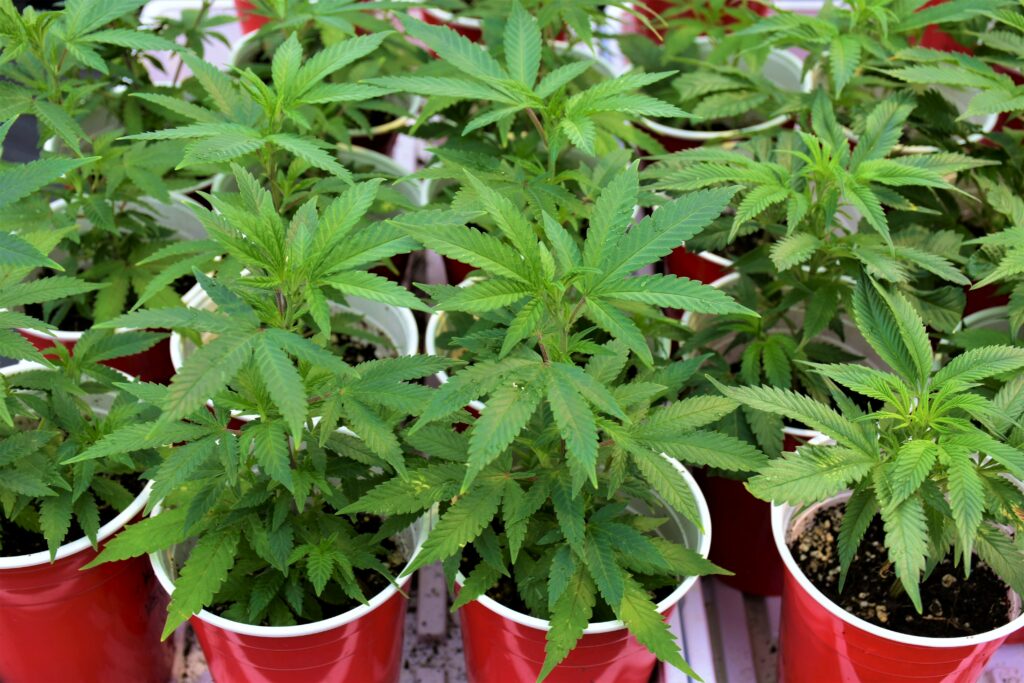
Introduction:
Transplanting cannabis clones is a pivotal moment in their growth journey, determining their ability to establish healthy root systems and flourish. To ensure successful transplantation, it’s crucial to choose high-quality clones, transplant at the right time, master the techniques of proper transplantation, and implement strategies to improve plant health and recovery. In this article, we will delve into these essential aspects, equipping you with the knowledge and resources necessary for successful transplanting.
1.) Selecting Healthy Clones:
When choosing cannabis clones, prioritize their health and vitality. Look for the following characteristics:
- Robust Growth: Select clones with vigorous growth, strong stems, and healthy leaves. Avoid clones that appear weak, wilted, or show signs of pests or disease.
- Root Health: Ensure the clone has a well-developed and healthy root system. Ideally, the roots should fill the current container without being excessively bound.
- Genetics: Consider the desired traits, such as high yields, specific cannabinoid profiles, or disease resistance. Choose clones from reputable sources or trusted growers to ensure genetic quality.
For more information on selecting healthy clones, you can refer to this article by Cannabis Now: Start Strong: Tips for Choosing the Right Clones
2.) Determining the Ideal Transplant Time:
Timing is crucial when transplanting cannabis clones. Consider the following factors:
- Root Development: Wait until the roots have adequately filled the current container, indicating healthy development. This ensures the plant is prepared for the transition to a larger pot or the ground.
- Vegetative Growth Stage: Transplant during the vegetative stage rather than flowering. This allows the plant to focus on root establishment and reduces stress.
- Photoperiod Considerations: If growing indoors, consider transplanting during the dark cycle to minimize stress on the plants.
To delve deeper into the ideal transplant time, this resource from Royal Queen Seeds provides valuable insights: How And When to Transplant Your Cannabis Plants
3.) Where and How to Transplant:
a. Container Selection: Choose a pot that provides ample space for root growth. Fabric pots or smart pots are excellent options as they promote better aeration and prevent root-bound conditions.
b. Growing Medium Selection: Opt for a well-draining growing medium with adequate nutrients. Common options include a mix of organic compost, perlite, and coco coir. Ensure the pH level is optimal for cannabis growth (around 6.0-6.5).
c. Transplanting Technique: Before transplanting, thoroughly water the clones to reduce stress. Gently remove the clones from their current containers, taking care not to damage the roots. Place the clone into the new pot, ensuring it is planted at the same depth as before. Firm the soil gently around the roots.
4.) Tips to Improve Plant Health and Recovery:
a. Temperature and Humidity: Maintain a favorable environment for the transplanted clones, with temperatures around 70-80°F (21-27°C) during the day and slightly cooler temperatures at night. Maintain humidity levels around 50-60% to prevent excessive transpiration.
b. Adequate Lighting: Provide ample light to support healthy growth. Utilize high-quality full-spectrum LED lights or high-intensity discharge (HID) lamps for indoor cultivation. Ensure your plants receive 6-8 hours of direct sunlight per day for outdoor cultivation.
c. Transplant Shock Prevention: To minimize transplant shock, consider using products that promote root growth and reduce stress. Mycorrhizal inoculants and rooting hormones are beneficial additives that can enhance root development and overall plant health.
d. Proper Watering and Feeding: After transplanting, water the clones lightly to avoid overwatering. Gradually increase watering as the plants establish themselves. Wait a few days before introducing nutrients to avoid overwhelming the roots. Monitor pH and nutrient levels regularly to ensure optimal uptake.
e. Support and Training: Provide support, such as stakes or trellises, to help the plants grow upright and prevent branches from breaking under their weight. Employ training techniques like topping, pruning, and low-stress training (LST) to promote bushier growth and maximize yields.
f. Pest and Disease Management: Regularly inspect your plants for pests and diseases. Implement preventive measures, such as using organic insecticides, practicing good sanitation, and ensuring proper airflow, to minimize the risk of infestations or infections.
Conclusion:
Transplanting cannabis clones successfully requires attention to detail and adherence to best practices. By selecting healthy clones, transplanting at the optimal time, and employing proper techniques, you can minimize stress and promote robust root development. Additionally, implementing strategies to improve plant health and recovery will enhance the overall performance of your cannabis garden. Remember to monitor your plants closely and make adjustments as needed. With careful care and patience, your transplanted cannabis clones will thrive, rewarding you with abundant, high-quality yields. If you are looking to buy clones this season, please check out the current offerings on our clones page. Happy growing!





